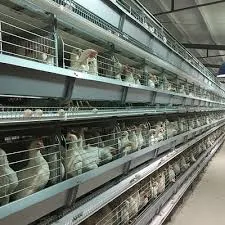Top Quality FRP Fan Blade Production for Optimal Performance
Dec . 25, 2024 05:37 Back to list
Top Quality FRP Fan Blade Production for Optimal Performance
The Rise of FRP Fan Blade Manufacturers Innovations and Industry Trends
In recent years, the demand for high-performance and durable fan blades has surged across various industries, leading to the emergence of specialized manufacturers focusing on Fiber Reinforced Plastic (FRP) fan blades. These manufacturers are capitalizing on the unique properties of FRP materials, which offer significant advantages over traditional metal or plastic fan blades. This article explores the key trends, benefits, and innovations in the FRP fan blade manufacturing sector.
Understanding FRP Fan Blades
FRP, or Fiber Reinforced Plastic, is a composite material made of a polymer matrix reinforced with fibers, usually glass or carbon. This combination results in a lightweight, durable, and corrosion-resistant product. FRP fan blades are increasingly being used in applications ranging from cooling towers and HVAC systems to wind turbines and industrial exhaust fans.
One of the primary reasons for the growing popularity of FRP fan blades is their exceptional strength-to-weight ratio. They can withstand harsh environmental conditions, making them ideal for outdoor installations where weather resistance is crucial. Additionally, the non-corrosive nature of FRP materials allows for longer service life and lower maintenance costs compared to traditional materials.
Advantages of FRP Fan Blades
1. Corrosion Resistance One of the most significant advantages of FRP fan blades is their resistance to corrosion. Unlike metal blades, FRP can endure exposure to chemicals, moisture, and salty environments without succumbing to rust or degradation.
2. Lightweight Nature FRP fan blades are significantly lighter than their metal counterparts, which translates to lower energy consumption during operations. This lightweight feature also reduces the load on the system, prolonging the lifespan of the motor and other components.
3. Enhanced Aerodynamics Manufacturers can design FRP fan blades with specific aerodynamic contours that optimize airflow and increase efficiency. This is particularly beneficial in applications where energy efficiency is critical, such as in industrial ventilation systems.
4. Versatile Design Options The molding capabilities of FRP allow for greater flexibility in design, enabling manufacturers to create custom shapes and sizes tailored to specific applications. This adaptability can enhance performance and meet unique operational requirements.
The Manufacturing Process
The process of manufacturing FRP fan blades typically involves the following steps
frp fan blade manufacturer

1. Material Selection Manufacturers choose the appropriate type of fiber (glass, carbon, etc.) and resin depending on the required properties and application.
2. Molding The selected materials are placed into molds that shape the fan blades. Different techniques, such as hand lay-up or automated processes, can be employed depending on the scale and specificity of production.
3. Curing The resin is cured to harden the composite material. This step is critical to ensuring the strength and durability of the final product.
4. Finishing After curing, the blades undergo finishing processes that may include trimming, sanding, and painting to achieve the desired aesthetic and functional qualities.
Innovations in the Industry
FRP fan blade manufacturers are continually innovating to keep pace with industry advancements. Some of the latest trends include
- Smart Features The integration of smart technology, such as sensors to monitor performance and structural integrity, is becoming more common. These features allow for proactive maintenance, reducing downtime and increasing efficiency.
- Sustainability Initiatives Many manufacturers are exploring eco-friendly resins and recycling methods to minimize environmental impact. This shift towards sustainability is in response to growing consumer demand for greener products.
- Advanced Testing and Simulation The use of finite element analysis (FEA) and computational fluid dynamics (CFD) in the design phase enables manufacturers to predict performance and optimize blade designs even before production.
Conclusion
As industries increasingly seek innovative solutions that combine performance and durability, FRP fan blade manufacturers are well-positioned to meet this demand. With their unique advantages and the potential for further advancements in technology and design, FRP fan blades represent a significant step forward in the evolution of industrial components. As this sector continues to grow, it will play a crucial role in enhancing energy efficiency and sustainability across various applications.
-
Automatic Feeding Line System Pan Feeder Nipple Drinker|Anping County Yize Metal Products Co., Ltd.
NewsJul.30,2025
-
Automatic Feeding Line System - Anping Yize|Pan Feeder,Nipple Drinker
NewsJul.30,2025
-
Automatic Feeding Line System - Anping County Yize Metal Products Co., Ltd.|Pan Feeder, Nipple Drinker
NewsJul.30,2025
-
Automatic Feeding Line System-Poultry Farming|Chicken Feeding&Watering
NewsJul.30,2025
-
Automatic Feeding Line System - Anping County Yize Metal Products Co., Ltd.|Pan Feeder Nipple Drinker,Broiler Farming
NewsJul.30,2025
-
Automatic Feeding Line System Pan Feeder Nipple Drinker-Anping County Yize Metal Products Co., Ltd.
NewsJul.30,2025






